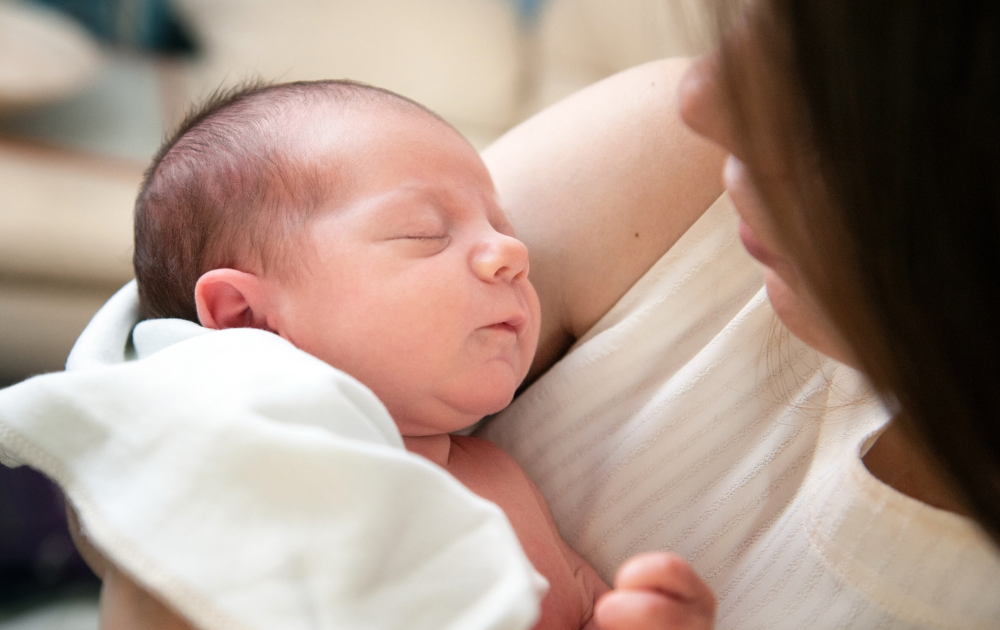
Table of Contents
Recognizing the early signs of autism in newborns is crucial for early intervention and support. While most children are usually diagnosed with autism between the ages of 5 and 6, it is possible to identify signs of autism in babies as young as 12 months. In fact, the earliest signs of autism can be observed as early as two months, although they may be easy to miss. Getting an autism diagnosis as early as possible allows children to start receiving the necessary support to learn basic skills that aid in communication and development.
Signs in Newborns
Infants and toddlers with autism may exhibit fewer communication skills compared to other children. They may display limited eye contact, not respond to their name being called, and show a reduced inclination to point, show toys, or use hand gestures. These early signs can be observed as early as two months, and some parents may notice them by the age of two years.
It’s important to remember that the presence of these signs alone does not guarantee an autism diagnosis, as a comprehensive evaluation by a healthcare professional is necessary for an accurate diagnosis. If you suspect that your child may be showing signs of autism, it is recommended to consult with a healthcare provider or specialist for further assessment.
Understanding and recognizing the early signs of autism is crucial for timely intervention and support. By being aware of the signs and seeking early diagnosis, parents and caregivers can take proactive steps to support their child’s unique needs and provide them with the resources and interventions necessary for their overall development and well-being.
Behavioral Patterns
When it comes to detecting signs of autism in newborns, understanding their behavioral patterns is crucial. Two key aspects to consider are repetitive behaviors and sensory sensitivities.
Repetitive Behaviors
Repetitive and restrictive behaviors (RRBs) are more common in children with autism than in the general population. In newborns and young children with autism, these behaviors may manifest in various ways. Some examples include intense interest in one particular thing, such as fixating on a specific object or topic, holding toys without engaging in imaginative play, or displaying limited and repetitive play behaviors.
Other repetitive behaviors may involve physical movements, such as hand flapping, spinning, or adopting specific body postures. These behaviors serve as self-soothing mechanisms or ways of regulating sensory input for individuals with autism. It’s important to note that these behaviors are distinct from typical behaviors seen in young children whose nervous systems are still developing.
Sensory Sensitivities
Sensory sensitivities are also common in children with autism. Newborns with autism may display unusual reactions to sensory experiences, such as being overly sensitive to loud noises or scratchy textures. They may also have specific preferences or aversions to certain tactile sensations, tastes, or smells.
These sensory sensitivities can impact a newborn’s ability to interact with their environment and may affect their social communication skills. For example, a newborn with autism may have difficulty transitioning between activities or may exhibit distress when exposed to certain sensory stimuli.
It’s important to remember that signs of autism in newborns are just the beginning of a diagnostic journey. Each child is unique, and a comprehensive evaluation by a healthcare professional specializing in autism is necessary to determine an accurate diagnosis. If you are concerned about your child’s development or suspect they may be showing early signs of autism, it is recommended to consult with a healthcare provider who can guide you through the diagnostic process.
Developmental Differences
When it comes to detecting signs of autism in newborns, there are certain developmental differences that can serve as indicators. These include differences in eye contact and gesturing patterns. Recognizing these early signs is essential for timely intervention and support.
Eye Contact
Babies who develop autism spectrum disorder (ASD) may exhibit a decline in eye contact starting at around 2 months of age. This decrease in eye contact can be an early indicator of autism. Autistic infants may not establish or maintain eye contact as frequently or as consistently as typically developing infants. This difference in eye contact can be observed as a pattern of nonresponse rather than a single instance.
Gesturing Patterns
Another developmental difference that can be observed in infants who later develop ASD is a reduced frequency of pointing and gesturing. Typically, infants use pointing and hand gestures to communicate and direct attention. However, babies with autism may engage in less pointing and gesturing compared to their nonautistic peers. This reduced use of gestures can sometimes indicate the possibility of a language delay.
Importance of Early Diagnosis
When it comes to autism, early diagnosis plays a crucial role in ensuring that children receive the support and interventions they need to thrive. Identifying signs of autism in newborns and getting a diagnosis as early as possible can make a significant difference in a child’s development and future outcomes.
One of the key benefits of early diagnosis is the opportunity for early intervention. Research has shown that early intervention can have a positive impact on a child’s overall development, especially in areas such as communication, social interaction, and cognitive skills. By starting interventions as early as possible, children with autism can begin learning basic skills that aid in communication and social interaction.
Early intervention programs are designed to target specific areas of development affected by autism. These programs typically involve a combination of therapies, including speech therapy, occupational therapy, and behavioral interventions. The goal is to provide children with the necessary tools and strategies to improve their communication, social skills, and adaptive behaviors.
Support Network
Another important aspect of early diagnosis is the establishment of a support network for the child and their family. A diagnosis of autism can be overwhelming for parents and caregivers, but having a support network in place can make a significant difference in navigating the challenges that may arise.
A support network can include a range of professionals, such as pediatricians, psychologists, and therapists, who specialize in working with children with autism. These professionals can provide guidance, resources, and ongoing support to families as they navigate their journey with autism.
In addition to professional support, connecting with other parents and caregivers who have children with autism can be invaluable. Support groups, online communities, and local organizations can provide a sense of community, understanding, and shared experiences. These networks can offer emotional support, practical advice, and a platform for parents and caregivers to share their stories and learn from one another.
Sources:
https://www.parents.com/baby/health/autism/early-signs-of-autism-in-babies/
https://childmind.org/article/what-are-the-earliest-signs-of-autism/
https://www.healthline.com/health/autism/signs-of-autism-in-babies
- Autism Routine Disruption in Adults: Coping Tips - July 16, 2024
- Autism and Obsession: An Overview - July 16, 2024
- Autism and Taking Clothes Off: Management Tips - July 16, 2024



